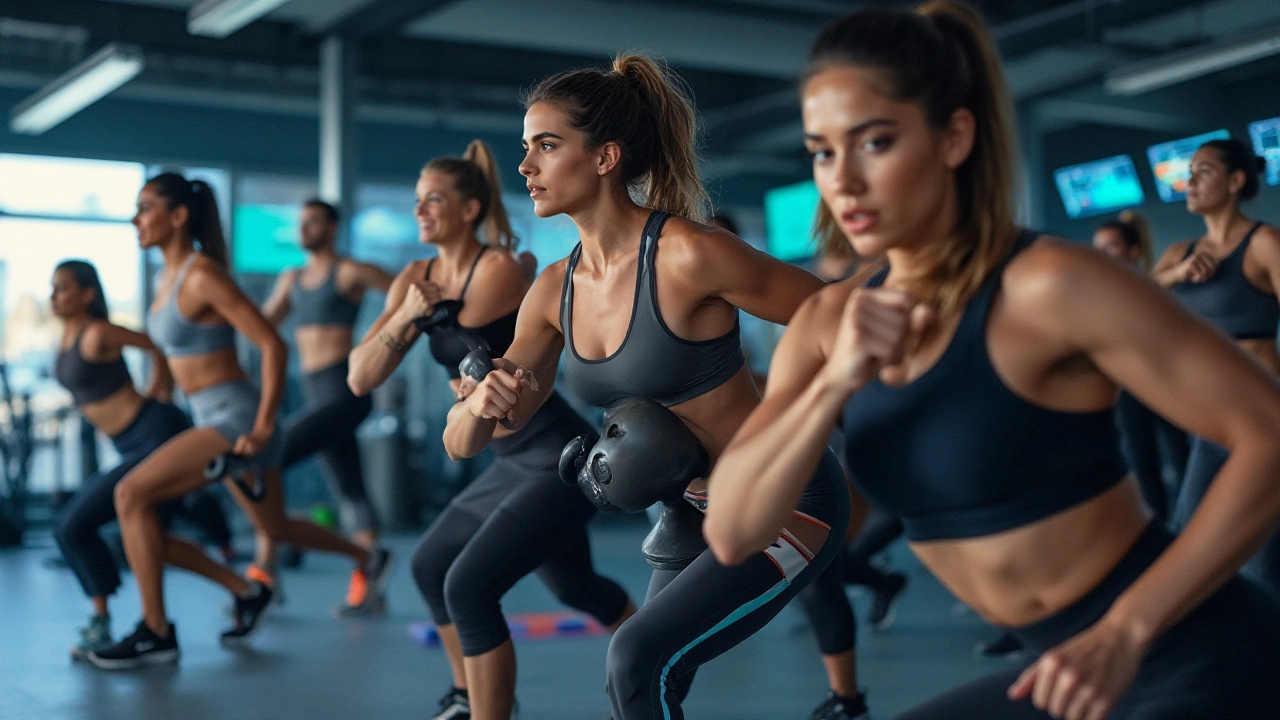HIIT Workouts: Quick Sweat Sessions That Actually Work
Ever wonder why a 20‑minute burst of effort can feel more effective than an hour on the treadmill? That’s the magic of high‑intensity interval training, or HIIT. Short bursts of all‑out effort followed by brief rest periods crank up your heart rate, torch calories, and keep your metabolism humming long after you finish.
What makes HIIT stand out is its efficiency. You don’t need fancy equipment or a massive time slot. All you need is a timer, a bit of space, and the willingness to push hard for a few minutes. The result? A workout that fits into a coffee break yet delivers serious fat‑burning power.
How to Build a Simple HIIT Routine
The basic structure is easy: work hard for 20‑40 seconds, rest or low‑intensity move for 10‑30 seconds, repeat 6‑10 times. Pick an exercise you enjoy—burpees, jump squats, mountain climbers, or even fast‑paced jogging in place. Here’s a sample you can try right now:
- 30 seconds of jump squats (go as deep as you can)
- 15 seconds of marching in place
- 30 seconds of high‑knees
- 15 seconds of slow breathing
- Repeat the circuit 6‑8 times
If you’re new, start with 4 rounds and add more as you feel stronger. The key is to give each work interval maximum effort—think “all‑out” for those seconds—then truly recover during the rest.
Frequency, Safety, and Real Results
Most experts agree that 2‑3 HIIT sessions per week are enough for weight loss and cardiovascular gains. One of our popular posts, “Does Doing HIIT 3 Times a Week Really Work for Weight Loss?”, shows that three weekly sessions can produce noticeable fat loss without overtraining—as long as you respect recovery days.
Safety matters. Warm up with five minutes of dynamic moves (leg swings, arm circles) before you go hard. If you feel dizzy or joint pain, cut the intensity or swap to a lower‑impact option like cycling or rowing. Always listen to your body; HIIT should challenge you, not break you.
Why does HIIT burn more fat than steady‑state cardio? The answer lies in the “afterburn” effect, or excess post‑exercise oxygen consumption (EPOC). After a HIIT session, your body continues to use extra oxygen to repair muscles and clear lactic acid, which means calories keep burning for up to 24 hours.
Want to track progress? Use a simple notebook or a fitness tracker to log the number of rounds, total work time, and how you felt. Over weeks you’ll see endurance improve, recovery shorten, and the workouts feel easier—proof that you’re getting fitter.
Need variety? Mix up the exercises every few weeks. Swap jump squats for kettlebell swings, add a sprint interval on a bike, or use a rowing machine for a full‑body blast. The variety keeps your body guessing and prevents plateaus.
Bottom line: HIIT is a time‑saving, calorie‑blasting tool that works for beginners and seasoned athletes alike. Start with a short, structured circuit, stay consistent 2‑3 times a week, and watch your stamina, strength, and waistline improve. Ready to give it a try? Set a timer, pick an exercise, and get moving—your future self will thank you.

How Many Times a Week Should You Do HIIT for Real Results
Maeve Larkspur Nov 30 0Find out how many times a week you should do HIIT for real results without burning out. Learn the science-backed sweet spot for fat loss, recovery, and long-term fitness.
More Detail
HIIT: The Ultimate Fat-Burning Workout
Maeve Larkspur Apr 10 0HIIT, or High-Intensity Interval Training, is quickly becoming the go-to workout for effective fat loss. By combining short bursts of intense exercise with brief rest periods, HIIT helps torch calories and boost metabolism better than traditional steady-state cardio. Discover how this efficient workout can fit into a busy lifestyle, learn the science behind its fat-burning abilities, and get tips on maximizing your routine.
More Detail
Unveiling How HIIT Workouts Transform Your Body: Muscle Building and Fat Burning Benefits
Maeve Larkspur Jan 2 0HIIT, or High-Intensity Interval Training, has gained popularity for its dual promise of muscle building and fat burning. This training method alternates between intense bursts of activity and fixed periods of low-intensity exercise or rest. Understanding how HIIT impacts your body requires exploring the balance between its cardiovascular benefits and muscle strengthening elements. The article also touches on specific HIIT strategies that can help individuals tailor their sessions based on personal fitness goals. Whether you're new to HIIT or looking to refine your routine, this guide offers insights to help you achieve optimal body transformation results.
More Detail